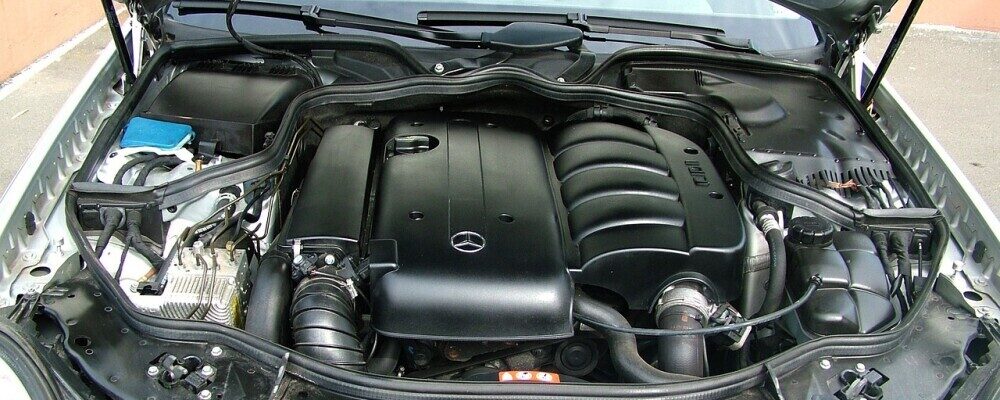
Classic Mercedes-Benz engines are known for their quality and durability, but as with any car, engine issues can pop up over time. Whether your Mercedes is making a strange noise, losing power, or having trouble starting, this guide will walk you through common engine problems and practical solutions to get it running smoothly again. With a few troubleshooting tips and an organized approach, you can identify and solve most issues before they become major repairs. Find out 9 effective tips for troubleshooting common Mercedes engine issues.
Mercedes cars are known for their luxury and reliability, but that doesn’t mean they’re free from engine troubles now and then. Whether you’ve got an older model or a shiny new one, knowing what can go wrong with the engine helps you keep things running smoothly.
Some typical issues that pop up with Mercedes engines include ignition troubles, pesky sensor failures, and those frustrating oil leaks. Ignition problems might mean your car struggles to start or the engine suddenly stops. When sensors act up, you might find incorrect readings messing with how your car runs. And oil leaks? That’s when you notice drips under your vehicle or higher oil consumption than usual.
Checking for these problems early means you save time and money down the road. Keeping an eye on how your engine sounds, noticing any strange smells, or frequent trips to the gas station can be your first cues. Trust your gut if your car feels off—it might be time for a car doctor visit.
Step 1: Diagnose Hard-Starting Issues
Why It Happens: Hard starts are often caused by a lack of fuel, spark, or air, which are the three essentials for engine combustion.
What to Do:
- Check the Battery: Start by testing your battery. If it’s low on charge or more than three to five years old, it may be time for a replacement.
- Inspect the Spark Plugs: Worn or fouled spark plugs can prevent proper combustion. If they look dirty or corroded, replace them with compatible plugs for your model.
- Fuel Delivery Check: If the battery and spark plugs are fine, check the fuel system. A clogged fuel filter or a weak fuel pump can reduce fuel flow, making it hard for the engine to start.
Resources:
- Battery Testing: AutoZone’s Guide to Battery Testing can help you test your battery’s charge.
- Fuel System Troubleshooting: This Guide offers tips on diagnosing fuel system issues.
Step 2: Address Engine Misfires
Why It Happens: Misfires occur when fuel doesn’t ignite in one or more cylinders. Common causes include faulty spark plugs, ignition coils, or fuel injectors.
What to Do:
- Inspect Spark Plugs and Coils: Check your spark plugs and coils for signs of wear. If either is damaged, replace them.
- Check Fuel Injectors: Clean or replace fuel injectors if they’re clogged or worn, as they can prevent fuel from reaching the cylinder.
- Run an OBD-II Scan: If the check engine light is on, a diagnostic scan can identify which cylinder is misfiring and help pinpoint the issue.
Resources:
- OBD-II Scanners: You can purchase an affordable scanner on Amazon or use one at auto parts stores like AutoZone.
- Spark Plug Replacement Guide: Autozone provides a step-by-step guide to replacing spark plugs.
Step 3: Solve Rough Idling Problems
Why It Happens: Rough idling can result from air intake issues, vacuum leaks, or fuel system problems.
What to Do:
- Inspect the Air Filter: A clogged air filter reduces airflow to the engine, causing rough idling. If it’s dirty, replace it.
- Check for Vacuum Leaks: Listen for hissing sounds around the engine bay, which can indicate a vacuum leak. Use a smoke test or spray soapy water on hoses to identify leaks, and replace any cracked or worn hoses.
- Examine the Throttle Body: Clean the throttle body, as buildup can restrict airflow and lead to idling problems.
Resources:
- Air Filter Replacement: NAPA Auto Parts provides tutorials and replacement air filters for Mercedes models.
- Vacuum Leak Testing: Family Handyman has a beginner-friendly guide on locating vacuum leaks.
Step 4: Fix Overheating Issues
Why It Happens: Overheating is often due to a problem with the cooling system, such as a low coolant level, radiator issues, or a failing water pump.
What to Do:
- Check the Coolant Level: Make sure your coolant is at the recommended level. If it’s low, refill it with the proper type for your Mercedes.
- Inspect the Radiator: Look for leaks or clogs in the radiator, which can restrict coolant flow. Clean the radiator fins with a soft brush and hose if they’re dirty.
- Test the Water Pump and Thermostat: If the radiator is fine, inspect the water pump and thermostat, as they control the engine’s temperature. If they’re not working properly, they may need replacement.
Resources:
- Coolant System Maintenance: Pep Boys offers a guide to checking and refilling coolant.
- Radiator Replacement Parts: RockAuto provides affordable replacement parts for cooling systems.
Step 5: Identify Oil Leaks
Why It Happens: Oil leaks can come from worn gaskets, seals, or valve covers, and they often lead to a loss of engine lubrication, which can cause further damage if left unchecked.
What to Do:
- Check the Valve Cover Gaskets: Inspect around the valve covers for any oil seepage, which is a common place for leaks.
- Examine the Oil Pan: Look under the car for any drips from the oil pan, which can indicate a gasket problem.
- Inspect the Oil Filter: Make sure the oil filter is tightly fitted. A loose filter can lead to leaks, and over time, may cause oil pressure issues.
Resources:
- Oil Leak Identification Guide: Bar’s Leaks explains common oil leak sources.
- Replacement Gaskets: AutoZone offers gaskets for valve covers and oil pans specifically for Mercedes models.
Step 6: Address Loss of Power
Why It Happens: Loss of power can result from a clogged fuel filter, dirty air filter, or ignition system issues, all of which limit the engine’s performance.
What to Do:
- Replace the Fuel Filter: If the fuel filter is clogged, it will restrict fuel flow, leading to reduced power. Replace it if necessary.
- Check the Air Filter: A dirty air filter blocks airflow to the engine, reducing power. Replacing the air filter can improve performance.
- Inspect the Exhaust System: Clogged catalytic converters or exhaust leaks can also reduce power output. If you notice rattling noises or sluggish acceleration, consider having the exhaust system inspected.
Resources:
- Fuel and Air Filter Replacement: NAPA Online provides replacement filters for Mercedes.
- Exhaust System Diagnosis: Meineke offers exhaust inspections and repairs.
Step 7: Fix Check Engine Light Issues
Why It Happens: The check engine light can come on for many reasons, from minor issues like a loose gas cap to more serious problems like engine misfires or oxygen sensor failure.
When this light turns on, start by checking the basics: make sure your gas cap is secure and see if there are any noticeable changes in how the car drives. If everything seems fine but the light remains on, booking a diagnostic check with a professional is the next best step.
Ignoring the warning signal can lead to bigger, costlier problems down the road. Promptly addressing the issue helps maintain your car’s reliability and keeps those repair costs in check. Consider it as a peace-of-mind check that ensures your car remains in top condition.
What to Do:
- Use an OBD-II Scanner: Start by reading the code with an OBD-II scanner to identify the issue. Many auto parts stores offer free diagnostics if you don’t own a scanner.
- Common Causes: Look for common causes based on the code, such as a loose gas cap, faulty oxygen sensor, or worn spark plugs.
- Consult a Mechanic if Needed: If the code indicates a more complex issue, consider taking your car to a trusted mechanic.
Resources:
- Free Diagnostic Services: Many AutoZone locations offer free code reading with an OBD-II scanner.
- OBD-II Code Lookup: OBD-Codes.com allows you to search specific codes and get detailed explanations.
Step 8: Resolve Unusual Noises
Why It Happens: Strange noises often point to mechanical issues within the engine, such as loose belts, worn bearings, or low oil levels.
What to Do:
- Identify the Noise: Try to pinpoint where the noise is coming from. For instance, a squealing noise may indicate a loose belt, while knocking sounds could point to an internal issue.
- Check Oil Levels: Low oil can cause knocking or ticking sounds, so verify the oil level first and top up if needed.
- Inspect Belts and Pulleys: Look for loose or frayed belts. Replacing worn belts can prevent them from breaking and causing further damage.
Resources:
- Troubleshooting Engine Noises: Bell Performance’s Guide offers tips for diagnosing and resolving common engine noises.
- Replacement Belts: FCPEuro carries replacement belts for Mercedes models.
Step 9: Inspect for Smoke from the Exhaust
Why It Happens: Different colors of smoke can indicate specific engine issues. Blue smoke often means burning oil, while black smoke suggests a rich fuel mixture, and white smoke may indicate coolant in the engine.
What to Do:
- Blue Smoke: Check for oil leaks, as this often means oil is seeping into the combustion chamber.
- Black Smoke: Inspect the air filter and fuel injectors. A clogged air filter or faulty injector can cause the engine to burn excess fuel.
- White Smoke: Look for signs of coolant loss. This could mean a head gasket issue, which may need professional repair.
Resources:
- Exhaust Smoke Troubleshooting: AutoExpress offers a detailed guide on diagnosing different exhaust smoke colors.
- Head Gasket Testing Kits: Amazon sells kits to test for blown head gaskets.
Wrapping Up 9 Effective Tips For Troubleshooting Common Mercedes Engine Issues
Troubleshooting common Mercedes engine issues doesn’t have to be overwhelming. By taking a systematic approach, identifying symptoms, and focusing on one issue at a time, you can resolve most problems yourself or know when it’s time to call in a professional.
Regular maintenance and early problem-solving will help keep your classic Mercedes running smoothly for years to come. Enjoy the journey of keeping your Mercedes in top condition!
Repair or Replace: Navigating Mercedes Engine Issues
When faced with engine troubles, deciding whether to repair or replace can feel like a big decision. The good news is, Mercedes engines can often be repaired, saving you the cost of a complete replacement.
Evaluating the extent of the problem is crucial. Are we talking minor oil leaks or more serious issues like a failing piston? Minor repairs can be cost-effective and keep you running smoothly for longer. However, extensive damage might mean it’s time to consider a replacement, especially if frequent repairs have become the norm.
Talking to a trusted mechanic is your best bet here. They can provide a clear overview of what’s wrong and how much it might cost to fix. It’s kind of like going to a doctor for a second opinion to confirm your health options!
If repair costs are creeping closer to what a replacement might run you, it could be more financially sound to opt for a new engine or even upgrade your ride altogether. Sometimes, peace of mind is worth the upfront cost.
Remember, keeping a detailed history of repairs helps in making these decisions. It paints a picture of your engine’s health and offers insight into when it’s smarter to repair or replace.

